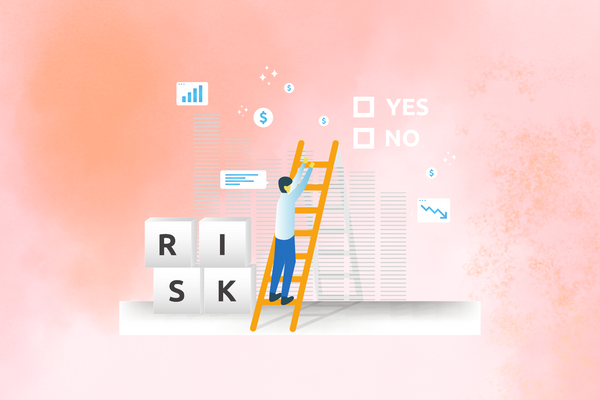
We live in an era where cybersecurity attacks purposefully target the most vulnerable link of the supply chain. Today, with the proliferation of AI-assisted programming, not only large businesses but also SMEs have become prone to data breaches. So, what is statistically the weakest link?
It is nearly unfeasible for a modern business not to outsource any service to a third-party vendor, whether data hosting on a cloud network or a simple fulfillment service. As such, third-party vendor risk assessment has increasingly become a central point of risk management strategies.
At Captain Compliance, we understand that outsourcing parts of your business is required to stay competitive. Our mission is to help businesses achieve regulatory and legal data compliance and help establish a solid framework for vetting third-party vendors to mitigate risk. This guide will show you actionable steps and best practices to assess a third-party vendor for risk.
Key Takeaways
Evaluation of vendor contracts is not just a formality but a strategic process that underpins the security and resilience of your business operations.
Vendors should be evaluated based on their criticality to your business operations; not all third-party vendors should follow the same risk assessment routine.
Identifying what critical data and assets are accessible or managed by third-party vendors is one of the most important benchmarks to assess during this process.
Preparing for the Vendor Risk Assessment
This guide will show you actionable steps and best practices to assess a third-party vendor for risk. (1).png

Oftentimes, third parties lack the needed safe data-handling practices to adhere to strict regulatory laws such as the GDPR or CPRA. This becomes an issue, as when a breach or violation does happen, your business risks facing massive fines, lawsuits, and eroded consumer trust.
In a publication by Deloitte, it was noted that a staggering 19% of data breaches occurred due to a compromised third-party vendor. Furthermore, it was noted that 2/3rds of all businesses are currently working with over 1000 third parties.
To mitigate as much risk as possible, your business should perform a thorough preparation by clearly stating the goal and scope of the needed objectives and identifying any vulnerable data and assets.
Defining the Scope and Objectives
Defining the scope and objectives involves determining which vendors should be assessed based on their criticality to your business operations. In other words, the goal is to determine the extent and purpose of this assessment.
The key considerations to consider are how significant the given vendor is in day-to-day activities and which types of data they handle. This is because not all third-party vendors carry the same risk and handle varying types of data.
In practice, any third-party vendors handling or interacting with consumer SPI or PII must be evaluated under the strictest scrutiny in how they adhere to any applicable data regulations.
Lower-risk vendors include vendors that don’t have a high impact on your business operation, and the types of data they handle do not fall under the sensitive category.
Assembling a Cross-Functional Assessment Team
Assembling a cross-functional team ensures your business has a real-time holistic view of the vendor relationship.
Knowing which practices and measures your third-party partner takes is crucial for both trust and risk minimization. As most vectors of a data breach involving a human element fail, checking the education level of the third-party vendor’s staff is also paramount.
This team should ideally include members from a broad spectrum to share their expertise:
IT experts with knowledge of the software systems used to convey the data and how to facilitate a seamless transfer.
Procurement, corporate compliance, legal, and finance all have a place in setting a solid framework for data access control and purpose limitation.
Real-time monitoring for data breaches can help boost the response rate and perform damage control to mitigate data volumes being leaked or exploited.
Let’s take a real-world practical example to illustrate how this process would work. Suppose your business was a major tech firm that needed to outsource customer support to a different country to keep costs low.
The call center in question must be strictly vetted, as any support agents handling consumer data need purpose-limited access controls and no means to copy or export said data outside their work. Any outbound email correspondence must be monitored so that consumer data is not stolen.
Any branch within the call center, such as finance or procurement, must be educated on the correct handling of data, proper incident reporting, and knowledge of handling social engineering attempts.
Identifying Critical Data and Assets
Identifying what critical data and assets are accessible or managed by third-party vendors is perhaps the most essential part of the preparation phase.
To do this, your business must take an inventory of all the data that will be shared with the third party and check if It includes customer data, intellectual property, financial information, or any other assets that could be potentially compromised.
To prevent an increasingly common scenario of data incidents from unfolding, having a compliance framework before engaging with any third-party vendors for business is crucial.
Vendor Selection and Due Diligence
This guide will show you actionable steps and best practices to assess a third-party vendor for risk. (2).png

Before you even consider a potential third-party vendor to conduct business with, a clear set of selection criteria must be pre-defined.
The most important aspects to factor in are the vendor’s reputation, track record of any data incidents, quality of their protocols, and whether they are compliant with the relevant laws and regulations.
Knowing which compliance metrics to gauge can be challenging, especially with the nature of constantly evolving data privacy laws. In this case, choosing to outsource compliance can be a time-efficient way to receive expert guidance on how to vet a third-party vendor properly.
Defining Risk Assessment Parameters
With the average cost of a single data breach incident in 2023 being estimated at around 4.45 USD million, the potential cost of outsourcing compliance becomes very manageable. Modern cybersecurity threats require constant and dynamic risk mitigation strategies.
Some key things to consider during the due diligence phase are:
Evaluating vendor security audits, compliance certificates, and financial records.
Cybersecurity assessments, including penetration tests and vulnerability scans.
Gauging where the third-party vendor stores data – is it outsourced, on a cloud, or locally stored?
These can give you a quick overview of the vendor’s overall readiness to handle any data your business sends over safely. It should be noted that any such tests must be tailored specifically to the vendor itself, as, based on your industry, certain regulatory laws regarding data handling may or may not apply.
In practice, this can be a tedious process of back-and-forth communication and probing by going through a predefined risk assessment checklist.
In the end, a track record coupled with a purpose-tailored risk assessment criteria plan can drastically reduce the risk of the said third-party vendor mishandling your data. After knowing which questions to ask and which areas are noteworthy to check, it is time to begin the risk assessment process itself:
The Risk Assessment Process
This guide will show you actionable steps and best practices to assess a third-party vendor for risk. (3).png

Gaining vendor cooperation and transparency is the cornerstone of any great third-party relationship. As a business, you want to deal with other businesses that adhere to and understand the importance of regulatory compliance solutions and the need for stringent safety measures.
If a vendor is initially averse to discussing or acknowledging security or compliance-related concerns, it is generally considered a major red flag. A sound third-party vendor will be willing to show their extensive checklist and security standards as a selling point and not downplay its importance.
Conducting on-site visits or remote assessments
There is only so much risk assessment you can perform remotely, and generally, having the ability to have in-person examinations of the process can yield a greater depth of information.
However, this is not always feasible, especially for non-enterprise-level solutions or remote vendor locations.
With this in mind, some further probing can still be done remotely; here are some actionable steps your business can undertake during the risk assessment:
Interviewing key personnel, such as compliance officers, real-time monitoring of cybersecurity staff memes, etc., is a great way to gauge the level of insight within the organization.
Analyzing the data and identifying vulnerabilities is an essential part, also known as data mapping, and serves to reveal any possible vulnerabilities or data pathways that should be reinforced.
Legacy third-party software used to access information is typically a warning sign, as many of these systems are no longer supported by security updates. One of the reasons recent large-scale industry-wide ransomware attacks worked is that many personnel were using 10-20-year-old operating systems or outdated protocols.
Risk Mitigation and Remediation
Proper risk mitigation strategies include enhancing security controls, modifying contract terms, conducting regular audits, implementing more stringent data protection measures, and establishing contingency plans for vendor-related disruptions.
The plan should prioritize risks, assign responsibilities for mitigation activities, and define clear metrics for success to ensure that the plan is actionable and effective.
When risks require remediation, it’s essential to establish timelines that are agreed upon by both the organization and the vendor.
These timelines must be realistic, allowing for the prompt resolution of issues without compromising the quality of work.
They should be formally documented within the contract or a service level agreement (SLA) to ensure legal enforceability and mutual understanding.
After setting the remediation plan into motion, continuous monitoring is crucial to ensure that the vendor complies with the agreed-upon timelines and actions. This involves regular check-ins, reviews of progress reports, and, where necessary, on-site audits.
Learn more about What is an Accountability Framework and how it ties to securing the right third-party vendor to conduct business with.
Monitoring should not be a one-time event but an ongoing process to ensure that vendors continue to adhere to the set requirements and that any new risks are managed promptly.
What to Do Past the Initial Phase?
This guide will show you actionable steps and best practices to assess a third-party vendor for risk. (4).png

Before signing off a contract with any third-party vendor, your business should carefully set up a contractual and legal agreement that includes contingency measures and ensures a high level of vendor accountability.
To enable you to operate safely with the help of a third-party vendor, having a risk management framework is paramount.
Let’s briefly examine the primary areas of interest when drafting a contract:
Step 1: Reviewing Contractual Clauses Related to Risk Management
Effective contracts with vendors should contain specific clauses that address risk management responsibilities and protocols. This includes the right to audit, data security requirements, incident reporting obligations, insurance requirements, and compliance with relevant regulations.
Step 2: Ensuring Contractual Alignment with Risk Assessment Findings
This ensures that any identified risks are explicitly addressed within the contract terms. For instance, if the risk assessment reveals potential cybersecurity weaknesses, the contract should stipulate the cybersecurity standards the vendor is required to maintain.
Step 3: Establishing Termination Clauses in Case of Non-Compliance
Termination clauses are vital as they provide an exit strategy for the organization if the vendor fails to comply with the agreed-upon risk management protocols.
These clauses should define what constitutes non-compliance and the consequences thereof, which may include the right to terminate the contract without penalty if the vendor does not remedy the breach within a given timeframe.
Ongoing Third-Party Vendor Risk Assessment Once a Vendor is Selected
That’s it; you are ready to start working with a third-party vendor to help expand and grow your business! Not quite yet; if you have deemed a vendor to be suitable and compliant with any data standards, there is always room for improvement.
Just because a specific vendor has a solid data handling framework doesn’t mean that your business should not attempt to encourage them further to adopt best practices that might be specific to your business operation.
The key here is proper communication – maintaining a strong vendor relationship also involves setting clear standards and data handling practices. Consider updating your own data compliance solutions to stay ahead of the curve of any new laws being passed.
Study which technology and tools, such as AI or machine learning algorithms, can help you monitor for data irregularities and serve as an early warning system.
Once you start conducting regular business with a third-party vendor, consider how often you will perform audits and how ready the vendor will be to adapt to new standards. Operational downtime is no joke, especially as we saw the outcome of the pandemic creating a whole new set of security challenges due to work-from-home measures.
As we can see, the process of third-party risk assessment is not a one-off task to be checked and relegated. Rather, it is an ongoing effort from both parties to ensure that any data standards are being met.
Closing
Once you have selected or sifted through third-party vendors by performing a risk assessment, it’s also a great time to evaluate your risk response rate and probe your own business data handling or data discovery practices for potential threats.
This is where Captain Compliance comes in; our mission is to help your business perform the needed tasks to achieve total regulatory compliance, mitigate data-related risk, and help guide you through the third-party vendor selection criteria.
We hope this guide was insightful, and you can now start taking steps toward selecting higher-quality business partners. Contact us to discuss which exact regulations or laws apply to your business data and the handling of third-party.
FAQs
What are the 5 Phases of Third-Party Risk Management?
The five phases of third-party risk management include:
Planning – having the correct risk management framework.
Due Diligence – properly vetting any third-party vendor before working with them.
Contract Negotiation – Creating and signing terms that protect your interests.
Continuous Monitoring – Ensuring continuous compliance through assessments.
Incident Response and Remediation – Managing incidents properly.
What are the Five Major Activities of Risk Management?
These are the five general activities related to risk management:
Risk Identification: categorizing which data is most vulnerable and vital.
Risk Analysis: Understand the nature and extent of the risk you undertake.
Risk Evaluation: Prioritizing properly based on the likelihood and impact.
Risk Treatment: Proactively taking action once a threat is identified.
Monitoring and Review: The process of constantly updating your data strategy.
What are the Best Practices for IT Risk Assessment?
Here is a brief overview of the best practices related to IT risk management:
Comprehensive asset inventory – assuring your IT assets are updated and accounted for.
Multi-factor Analysis – Consider how likely threats of varying angles are and their impact.
Documentation and Reporting – keeping a detailed record and reports can boost accountability and help decision-making.
What is the Best Practice for Managing Third-Party Access to Sensitive Data?
The best practices when dealing with third-party access to sensitive consumer data are:
Strict Access Controls – Implementing robust authentication and authorization processes.
Continuous Monitoring – Monitoring third-party activities to detect unauthorized access or anomalies.
Incident Response Planning – Preparing for and being able to respond effectively to any data breaches or security incidents.